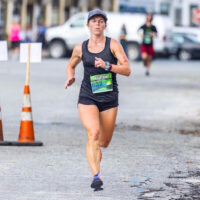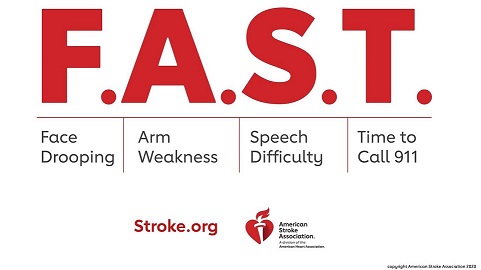Kennebunk woman who survived multiple strokes shares her journey
A stroke can happen to anyone at any point in their lifetime. May is American Stroke Month and the American Stroke Association wants you to know how to reduce your stroke risk and learn the signs everyone should know to spot a stroke F.A.S.T.
Heart disease and stroke are leading causes of death in Maine and stroke is a leading disabler. Globally, about one in four adults over the age of 25 will have a stroke in their lifetime. Even so, most adults in the U.S. don’t know the F.A.S.T warning signs of a stroke, and that stroke is highly treatable if you call 911 as soon as you recognize the symptoms.
Learn how to spot a stroke F.A.S.T.:
- Face Drooping – Does one side of the face droop or is it numb? Ask the person to smile. Is the person’s smile uneven?
- Arm Weakness – Is one arm weak or numb? Ask the person to raise both arms. Does one arm drift downward?
- Speech Difficulty – Is speech slurred? Is the person unable to speak or hard to understand? Ask the person to repeat a simple sentence, like “The sky is blue.”
- Time to Call 911 – If someone shows any of these symptoms, even if the symptoms go away, call 911 and get to a hospital immediately.
If someone is having a stroke, they must get medical attention right away. On average, 1.9 million brain cells die every minute that a stroke goes untreated. When brain cells die during a stroke, the abilities controlled by that area of the brain are lost. These abilities may include speech, movement, and memory. The way a stroke affects you depends on where the stroke occurs in the brain and how much of the brain is damaged.
According to the Association, early treatment leads to higher survival rates and lower disability rates. Recognizing the stroke warning signs and calling 911 immediately may make the difference between a strong recovery or long-term disability, survival or even death.

Celina McMichael
Even though some people are at higher risk for stroke, such as previous stroke survivors and people with unmanaged Atrial Fibrillation (AFib) or high blood pressure, strokes are largely preventable. However, some strokes do not have a known cause and can even affect healthy young people.
Celina McMichael of Kennebunk suffered several strokes starting at age 19 which continued into her 40’s. Her strokes were from an unknown cause, which make up about one-third of the most common type of stroke. There are two types of strokes: hemorrhagic or ischemic. The majority of stroke cases are ischemic strokes which occur as a result of an obstruction within a blood vessel supplying blood to the brain. (A hemorrhagic stroke occurs when a weakened blood vessel ruptures and spills blood into brain tissue.) In some instances, despite testing, the cause of a stroke cannot be determined. In this case, a stroke of unknown cause is called a “cryptogenic stroke.”
“Two days after my 40th birthday, the big one hit – after years of hiding the symptoms like tingling hands, numb face, confusion, dizziness,” said McMichael. “I learned to ignore my symptoms because I had been told since I was 19 that I was anxious, it was probably low blood sugar from my activity level, or just a migraine. This time the symptoms were classic: drooping face, lost control of both arms and my left hand stopped working, I lost my ability to swallow, I was having difficulty breathing, and my voice and speech were affected.”
Approximately 800,000 people (equivalent to about half the population of Nebraska) in the United States have a stroke every year, but the large majority of strokes can be prevented. According to the Association, the best course of action is to understand controllable risk factors such as maintaining a healthy blood pressure level, eliminating smoking/vaping, increasing physical activity and maintaining a healthy diet to reduce the chance of stroke.
“I am grateful every day to be here functioning so completely and am searching for ways to support other survivors, especially women and or young stroke survivors that have difficulty mitigating the medical world,” said McMichael.
For more information and resources to help prevent stroke, visit Stroke.org/StrokeMonth.
